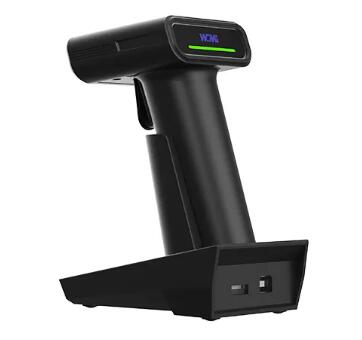Oct. 31, 2024
Handheld barcode scanners are ubiquitous in modern retail and logistics environments. They are vital tools that streamline processes, improve accuracy, and enhance efficiency. But how do these devices actually work? In this article, we will delve into the inner workings of handheld barcode scanners, exploring their key components, types, and the technology behind their operation.

At their core, handheld barcode scanners consist of several essential components that work together to capture and process barcode data. These include:
1. Light Source: The light source illuminates the barcode, making it easier to read. LED lights are commonly used in modern scanners due to their brightness and energy efficiency.
2. Lens: The lens focuses the light reflected from the barcode onto the sensor. This component is crucial for capturing a clear and accurate image of the barcode.
3. Sensor: The sensor, often a charge-coupled device (CCD) or a complementary metal-oxide-semiconductor (CMOS) sensor, converts the light reflected from the barcode into an electrical signal.
4. Decoder: The decoder processes the electrical signal, interpreting the barcode pattern and converting it into digital data that can be understood by a computer.
5. Interface: The interface transmits the decoded data to a connected device, such as a computer, tablet, or point-of-sale system. Common interfaces include USB, Bluetooth, and Wi-Fi.
There are several types of handheld barcode scanners, each utilizing different technologies to read barcodes. Understanding these types can help users choose the right scanner for their specific needs.
1. Laser Scanners: Laser scanners use a laser beam to scan the barcode. They are known for their accuracy and ability to read barcodes from a greater distance. These scanners are ideal for environments where barcodes are frequently scanned from various angles and distances.
2. CCD Scanners: Charge-coupled device scanners use an array of tiny light sensors to capture the barcode image. They are typically more affordable than laser scanners and are well-suited for close-range scanning.
3. 2D Imagers: 2D imagers can read both 1D (linear) and 2D (matrix) barcodes. They capture an image of the barcode and use sophisticated algorithms to decode it. These scanners are versatile and can read barcodes in various orientations and conditions, including damaged or poorly printed codes.
The scanning process involves several steps that occur in rapid succession:
1. Illumination: The scanner's light source illuminates the barcode, creating a contrast between the dark bars and light spaces.
2. Reflection: The light reflects off the barcode and is captured by the scanner's lens and sensor.
3. Conversion: The sensor converts the light into an electrical signal that represents the barcode pattern.
4. Decoding: The decoder interprets the electrical signal, converting it into digital data that represents the information encoded in the barcode.
5. Transmission: The digital data is transmitted to a connected device via the scanner's interface, where it can be processed and used for various applications.
Handheld barcode scanners are used in a wide range of industries and applications, including:
1. Retail: Scanners streamline the checkout process, manage inventory, and assist with price verification.
2. Logistics: In warehouses and distribution centers, scanners track inventory, manage shipments, and ensure accuracy in order fulfillment.
3. Healthcare: Scanners are used to track patient information, manage medication administration, and maintain accurate records.
4. Manufacturing: In manufacturing environments, scanners track parts and materials, monitor production processes, and ensure quality control.
Handheld barcode scanners are indispensable tools in many industries, offering speed, accuracy, and efficiency. By understanding how these devices work, businesses can make informed decisions when selecting the right scanner for their needs. Whether you need to streamline operations in retail, logistics, healthcare, or manufacturing, choosing the right supplier is crucial. For more information on handheld barcode scanners or to find the right device for your application, contact us today.
HOT PRODUCTS
It has a perfect customer response mechanism in 24 hours to provide you with first-class after-sales service.
Quick Links
Quick Links
Contact Us
Tel.: +86 22 6621 1296
Email: liu_y@wavecreating.com
Skype: +86 186 2322 2706
Add.: No19 Xinhuanxi Road, Teda, Tianjin, China
Fax: +86 022 6621 1296
Whatsapp: 86 18522521070
